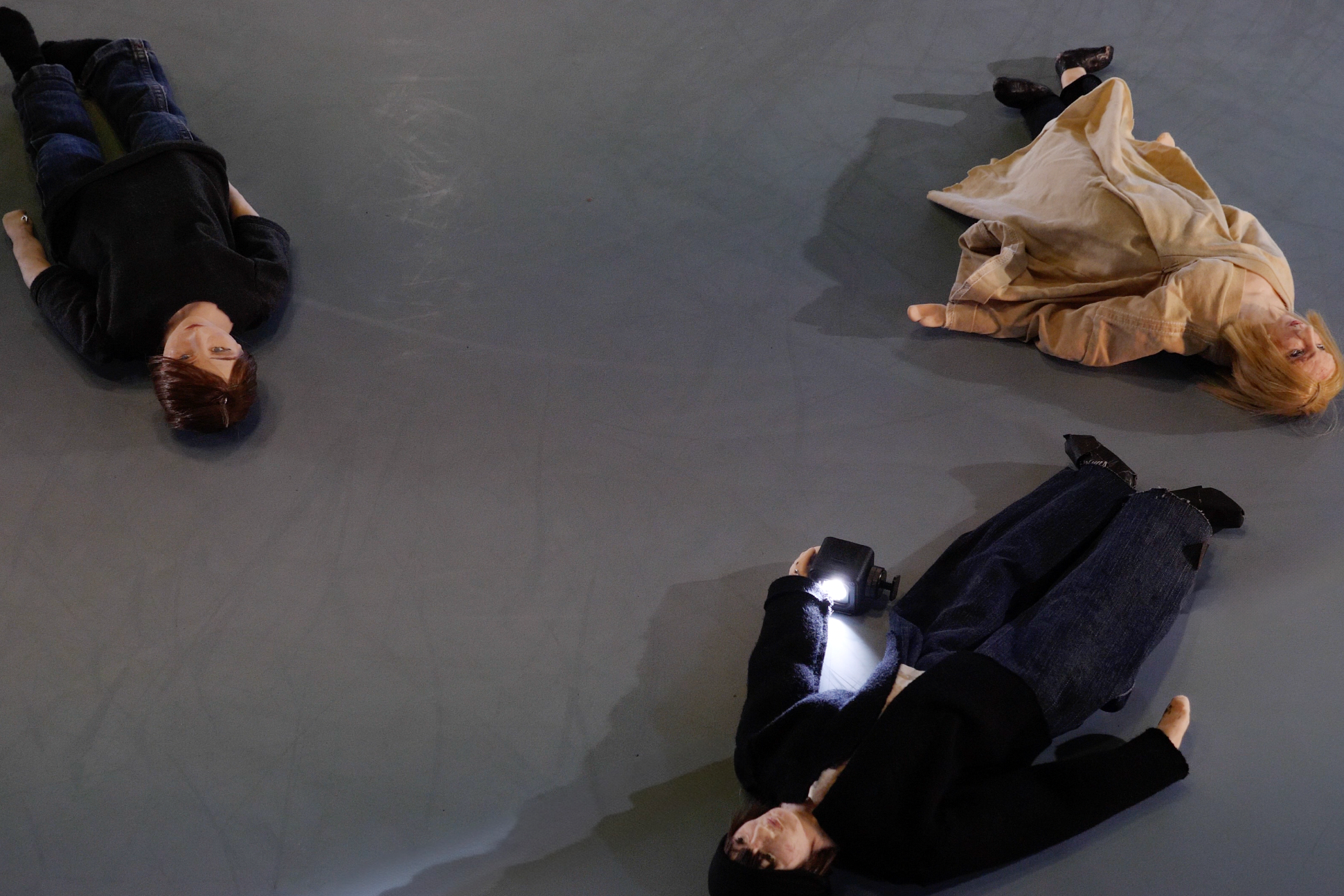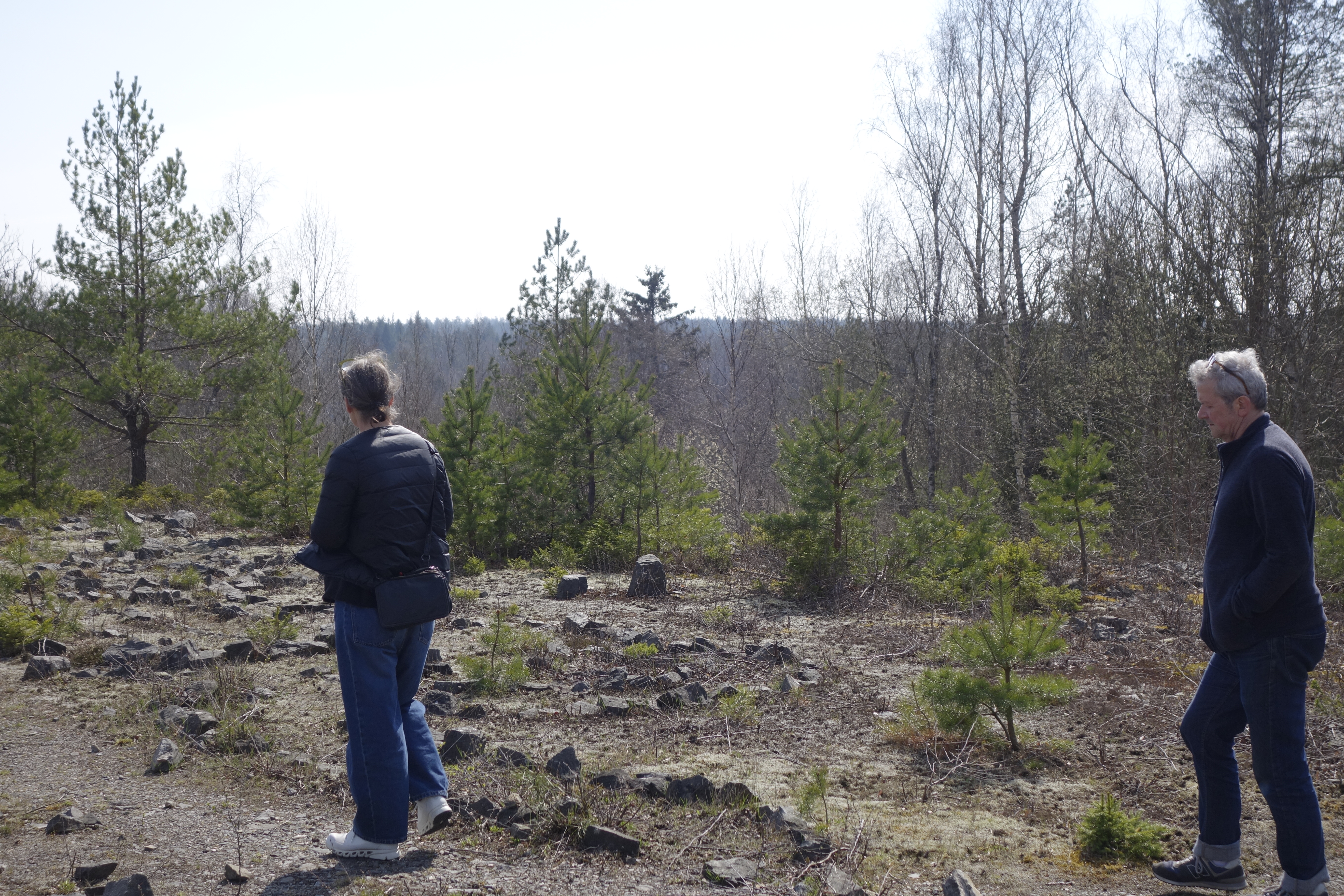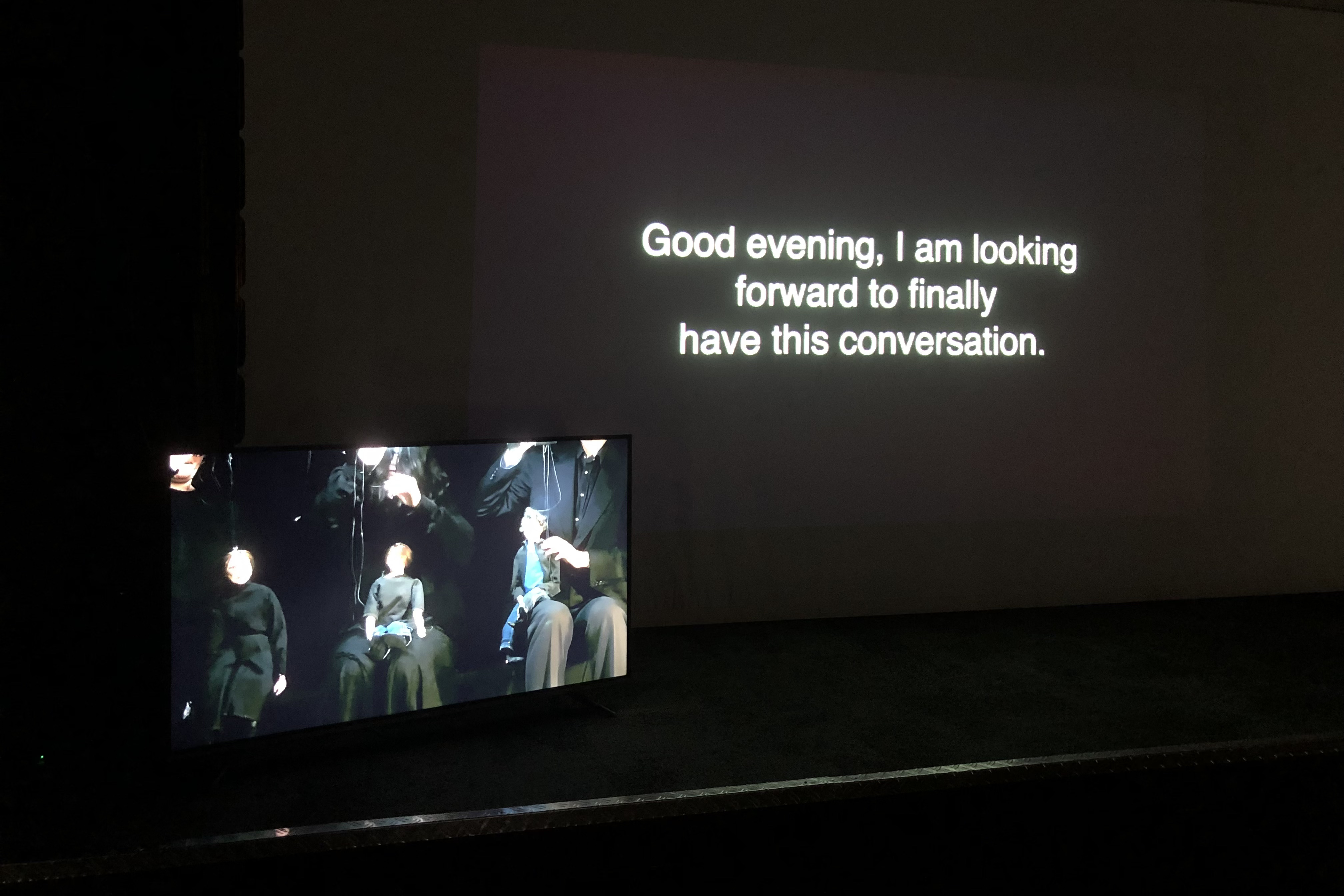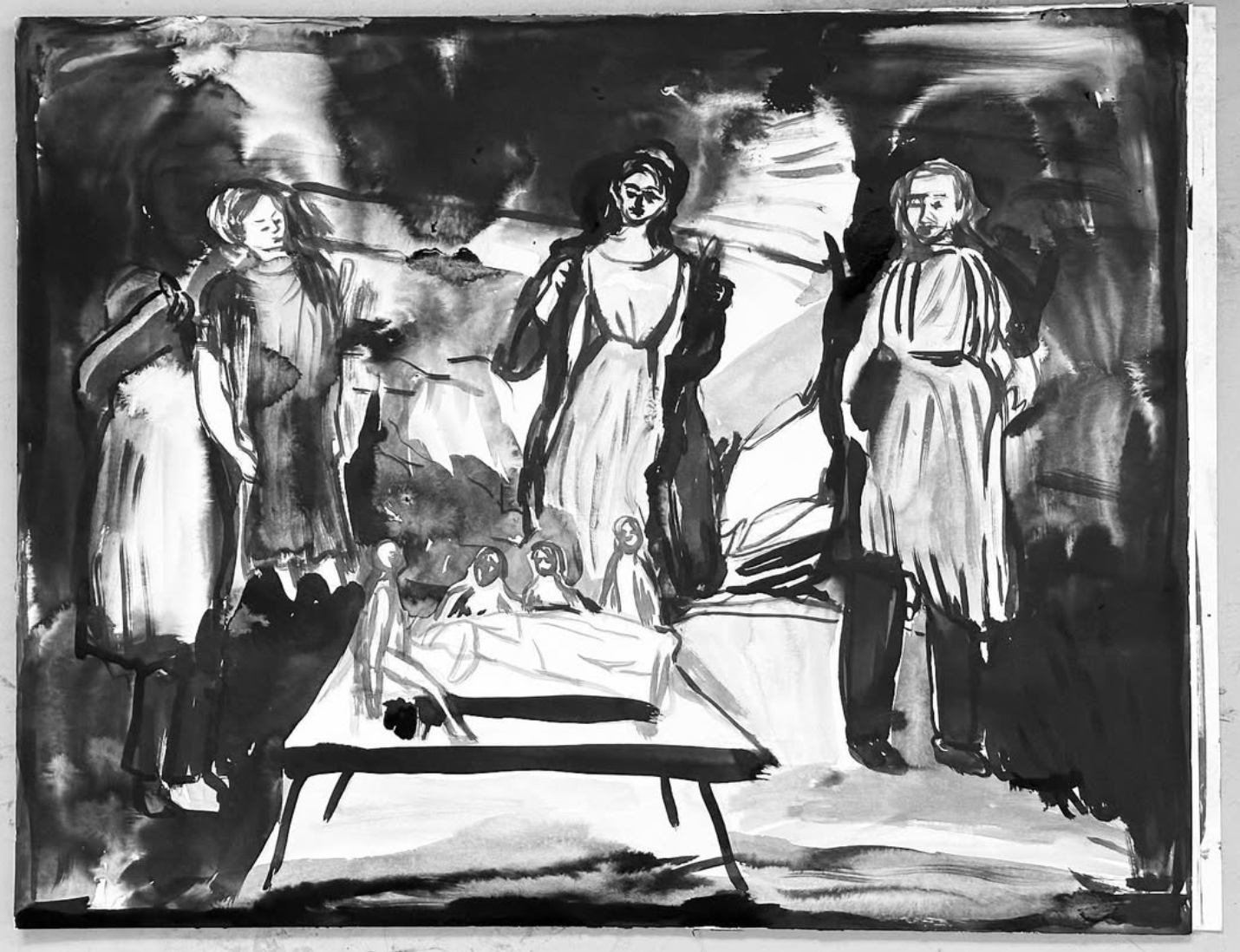Szuper Gallery is an artist collective that originated out of a contemporary art gallery in Munich of the same name in the 1990s. Its members, Susanne Clausen and Pavlo Kerestey, have collaborated to create works that incorporate video installations, sculptures, paintings, and performances and have exhibited across Europe and North America.
A good idea of what Szuper Gallery is about can be gleaned from the artists’ self-description of the original Munich gallery as “performative”. That is, while running as a real gallery on paper, its programme and the operation of the gallery itself was intended to subvert the model that it followed prima facie. A notorious project was the installation of a glass lift in the Munich immigration offices, which ran as a changing exhibition space and subsequent archive for almost 20 years, showing works that explored the intersection between migration, bureaucracy and art. In general, this kind of Brechtian thinking underlies much of their work. It is also what makes it so interesting, given the innate political nature of the new forms of communication that define our age.
Full disclaimer, they are also my parents! I was fortunate to join them for a couple of days in the small town of Knislinge, which lies in the southern Skåne county of Sweden, where they are currently completing an artist residency at the Milvus Artistic Research Centre (MARC). This is where I was able to have the following conversation with Susanne, first about about their residency, and then about the project they are currently working on, called ‘Proxies’.
Can you describe the day-to-day experience of your residency in Knislinge?
Our residency is hosted by MARC, and our studio is based in an old Folkets Park (People’s Park) — a type of public recreation space that used to be common in most Swedish towns and cities. These parks were originally created by the labour movement as spaces for political rallies and for workers and their families to relax, often featuring bandstands and stages for concerts and events. Working here gives us a lot of space — both physically and conceptually — to try out ideas for our new project. There’s a certain resonance between the atmosphere of the park and the puppets and sets we’re creating: the history of performance, gathering, and political expression embedded in the site seems to echo through the work as it develops.
Have you been able to engage with the local community or landscape in a way that has influenced your work, or the thinking surrounding your work?
We showed a draft version of our new project during the recent opening event at MARC, which gave us a chance to test the puppets and a new video we’re developing. It was also a useful moment to see how audiences respond. MARC has a strong emphasis on performance and dance, which has brought an interesting perspective to the performative elements of our work. We also ended up dancing a lot during Frédéric Gies’ performance at the event — which was unexpectedly joyful and energising. In terms of the landscape, we’ve been filming in the nearby woods and are hoping to shoot at a local black granite quarry. The quarry immediately reminded us of the stage set we created for our earlier piece Ballet – Granit, where we built rocks and boulders as part of an apocalyptic landscape. The quarry feels almost like a ready-made stage set, cut deep into the earth — we’re now exploring how this site might resonate with the themes of Proxies.
Svarta Bergen (Black Mountain), a former granite quarry near Knislinge. Photograph by Uriel Kerestey, 2025.
You are currently working on a project called ‘Proxies’. When I think of that term, I think of think about the idea of ‘standing in’ or mediating for someone else. Am I understanding the term correctly?
Yes, absolutely — that’s exactly why we’ve chosen Proxies as the working title. We’re developing a series of figure puppets that act as stand-ins or placeholders — for ourselves, for others, and for the complex roles people take on during moments of crisis or displacement. The puppets allow us to navigate and reflect on our surroundings in a slightly distanced, performative way. They are both surrogates and subjects in their own right: they carry traces of personal experience, but they also function as abstracted bodies through which larger questions about vulnerability, representation, and agency can be explored. In that sense, the idea of the ‘proxy’ becomes a way to think through questions of presence and absence, especially in contexts where direct representation feels too fraught or too literal. They allow us to approach difficult or politically charged material through gesture, staging, and metaphor — without claiming to speak for someone else.
Returning to the puppets. I think the idea of using puppets is quite interesting. Puppetry is of course an ancient performance form, but I can think of a couple of contemporary artists who have used puppets in different ways, such as Pierre Huyghe or Mike Kelley. However, the first thing that stood out to me after seeing your puppets for the first time is that they resemble you both. Is there are link between this choice and the concept of proxies ‘Proxies’?
Yes, very much so. The puppets are deliberately made to resemble us — or versions of us. They are not exact replicas, but lookalikes, slightly distorted or stylised. This resemblance creates a slippage between the real and the performed, between presence and substitution. That’s central to the idea of Proxies — these figures are standing in for us, but also for broader roles, or ideas that we’re trying to work through in the project. The use of puppets lets us externalise things that might be difficult to express directly — it gives us a kind of aesthetic and emotional buffer. There’s also something disarming and strange about seeing yourself as a puppet: it allows for a shift in perspective, where humour, discomfort, and vulnerability are all in play at once. By performing through these figures as doubles, it becomes a shared, ambiguous space where personal and political narratives can intertwine.
Did you create them yourself?
We made the puppets ourselves. The process was quite intuitive and sculptural — we didn’t start with a fixed plan or design, but instead let the forms emerge through making. We made a wire and wood structure, using epoxy clay, fabric, combining traditional string puppet-making techniques with a more improvised approach. Because they are based on our own bodies and clothing, the process also became a kind of self-portraiture, but one that’s fragmented and a bit distorted. Building them ourselves is important — it allows for a physical, tactile engagement with the figures and gives us space to reflect on what it means to construct a ‘proxy’.
You both have a strong personal connection to Ukraine. Is this something that comes up in this work? I ask especially given that you seem to have been working on this project since the start of the full-scale invasion in 2022.
One of the starting points for Proxies was a radio interview I listened to early in the full-scale war. It was on Radio Eins – Der Talk, where the publisher Jakob Augstein interviewed the Ukrainian writer Tanja Maljartschuk. I found the conversation deeply unsettling. I transcribed it in its entirely it, not because it offered clarity, but because it captured something symptomatic about how parts of the German and European left were responding to the war. Augstein’s insistence on pacifism, empathy, and dialogue quickly revealed itself as a way to avoid responsibility, especially in light of Germany’s historical and moral obligations toward Ukraine. Critics have since pointed out the emotional imbalance of the exchange. As one article in Übermedien aptly put it: “Bitte fühlen Sie sich doch in mich ein, wie ich mich nicht in Sie einfühle.” (“Please empathise with me, while I refuse to empathise with you.”) It was a striking example of how ideological pacifism can become a shield for inaction — a refusal to acknowledge violence unless it fits within pre-approved moral frameworks.
This wasn’t an isolated case — it echoed a broader pattern across segments of the German and European left, where long-held ideals of pacifism were used to deflect any real engagement with the violence unfolding in Ukraine. Francesca Melandri captures this dynamic with brutal clarity in her novel Kalte Füsse (Cold Feet). Her line “Die Welt wie wir sie kannten war nur eine Kulisse. Jetzt ist sie wieder so hart wie Stahl.” (“The world as we knew it was only a backdrop. Now it is once again as hard as steel.”) speaks directly to the collapse of comfortable illusions - something that I think many in Western Europe have struggled to fully confront.
As a German artist working closely with Ukrainian collaborators, this tension is very present for me. There’s a constant reckoning with my own position — historically, culturally, and politically. I’m aware of the privilege and safety from which I observe events that have deeply affected people I care about and work with. Proxies emerged in part from that discomfort, from the need to find a form that could hold ambiguity, that could stand in the space between witnessing and acting, between empathy and complicity. Working with puppets doesn’t offer answers, but they do allow us to approach questions of displacement, war, and historical responsibility with a kind of embodied honesty. They are fragile, awkward, partial.
Szuper Gallery (Susanne Clausen and Pavlo Kerestey), Proxies, 2025. Image @ the artists.
So you mentioned Francesca Melandri’s Cold Feet and its influence on the conceptual foundations of Proxies. Has this shaped the visual language of the work as well? I am thinking in this work, but also perhaps your drawings.
Yes, absolutely. Cold Feet didn’t just resonate with me conceptually - its tone, its structure, and its insistence on reckoning with history have all informed how I approached the drawings for Proxies. Melandri’s writing weaves together personal memory, national trauma, and historical research, and I found myself responding to that method through drawing: not by illustrating events, but by using drawing as a way to slow down, obscure, and reimagine historical material.
The drawings are black and white ink renderings based on a range of photographs — some historical, some imagined, and some personally significant. They include archival images, news photos, and visual fragments that hover somewhere between fact and fiction. Rather than reproducing the photographs directly, I use drawing to interrupt them, to erase or exaggerate certain elements, to impose another layer of interpretation. The result is a kind of friction between memory and distortion, between image and imagination. I think of them as visual proxies — they stand in for something real but unreachable, something that resists complete representation.
You’ve spoken about Proxies as a performative project involving puppetry and video. But I understand you’re also developing a series of drawings as part of the installation. Could you tell us more about that?
The drawings are a significant part of Proxies. They add another layer to the work, quieter but persistent, where themes like memory, dislocation, and historical responsibility are processed visually through layering, obscuring, and repetition. A key influence on this aspect of the project has been Francesca Melandri’s Kalte Füsse (Cold Feet). What struck me about the book is how she blends fact and fiction, personal narrative and historical reflection, to interrogate the assumptions of a generation — my generation — who came of age in what felt like a relatively ‘carefree’ time in Europe, the so-called end of history.
Melandri doesn’t just critique external systems; she interrogates her own position, acknowledging that her perception of the world has shifted in response to the full-scale invasion of Ukraine. That shift, the recognition that reality has changed, that historical violence is no longer something abstract or safely distanced, really resonated with me. I found myself asking similar questions about my own practice, about what forms are adequate, or even possible, when confronting this new urgency.
The drawings emerged from that space. They’re all in black ink, sometimes dense and scratchy, sometimes fluid and almost erased. They begin with photographs, both real and imagined: historical images, found sources, fragments that have stayed with me. But I don’t reproduce them faithfully. Instead, I rework them until something else appears, something more ambiguous, more haunted.
Susanne Clausen, Untitled, 2024. Image @ the artist.
Are there particular images or photographic sources that have shaped your drawings in Proxies? How do you select or respond to these images?
Yes, many of the drawings in Proxies are based on photographs — some historical, some personal, and others found in unexpected places. The process of selecting them is intuitive, but I’m drawn to images that hold tension or ambiguity, something unresolved, difficult to read. One source, for example, is a photograph of Margret Zimmermann walking a tightrope over the ruins of the bombed-out Haymarket in Cologne in 1946, which I found in an article by Yuliya Komska in Cabinet magazine. Another is a documentary image from Stuart Brisley’s performance Before the Mast at Domobaal in London in 2013, a still that reflects his sustained engagement with historical conflict and political crisis, and the way performance can both hold and disturb memory.
Some of the most personal sources are family photographs taken in East Prussia and Königsberg in the strange, quiet-seeming years of the late 1930s and early 1940s — unassuming on the surface, yet deeply fraught in the context of the Third Reich and the war unfolding. These are images of a place that no longer exists. One photograph shows my mother and great-grandmother inside a Danish refugee camp after fleeing over the Baltic Sea, a quiet domestic moment underpinned by displacement and fear. These aren’t necessarily images that the viewer needs to recognise or decode, but they’re important in my own context. They inform how I think about inherited memory, and my own reflection on what pacifism means, not as an abstract ideal, but as something shaped by loss, survival, and a shifting historical awareness.
These images, whether public or private, are not used as illustrations. Through drawing, I revisit them in ways that obscure, disrupt, or reimagine their content. I’m interested in how drawing can hold contradiction, how it can act as both a gesture of intimacy and a means of distancing.
You’ve spoken about drawings and puppets as part of Proxies. Are there other visual elements that will shape the final installation?
Pavlo is currently developing a new series of paintings that will play an important role in how we navigate the space of the installation. While the final layout isn’t fixed yet, we’re thinking of the paintings not just as individual works but as part of a set, something that helps build the environment in which the puppets, drawings, and video sit. These paintings draw on the visual language of talk show, radio, and TV studio settings. They reference those familiar staged spaces where dialogue, opinion, and performance blur and which have become so dominant during the war. We’ve been watching these talk shows constantly at the start of the war, they offer a strange mix of theatre and inertia, where the same questions are asked again and again, often without resolution. Pavlo’s paintings capture that atmosphere, the stylised lighting, the artificial perspectives, the surface-level neutrality of those sets that claim to present truth but are always performing something.
In that sense, the paintings aren’t backdrops, but part of the conceptual core of the project. They speak to the tension between spectacle and seriousness, between public discourse and personal stakes. They also link back to the puppets — suggesting a kind of stage or framing device, but one that is unstable and coded.




